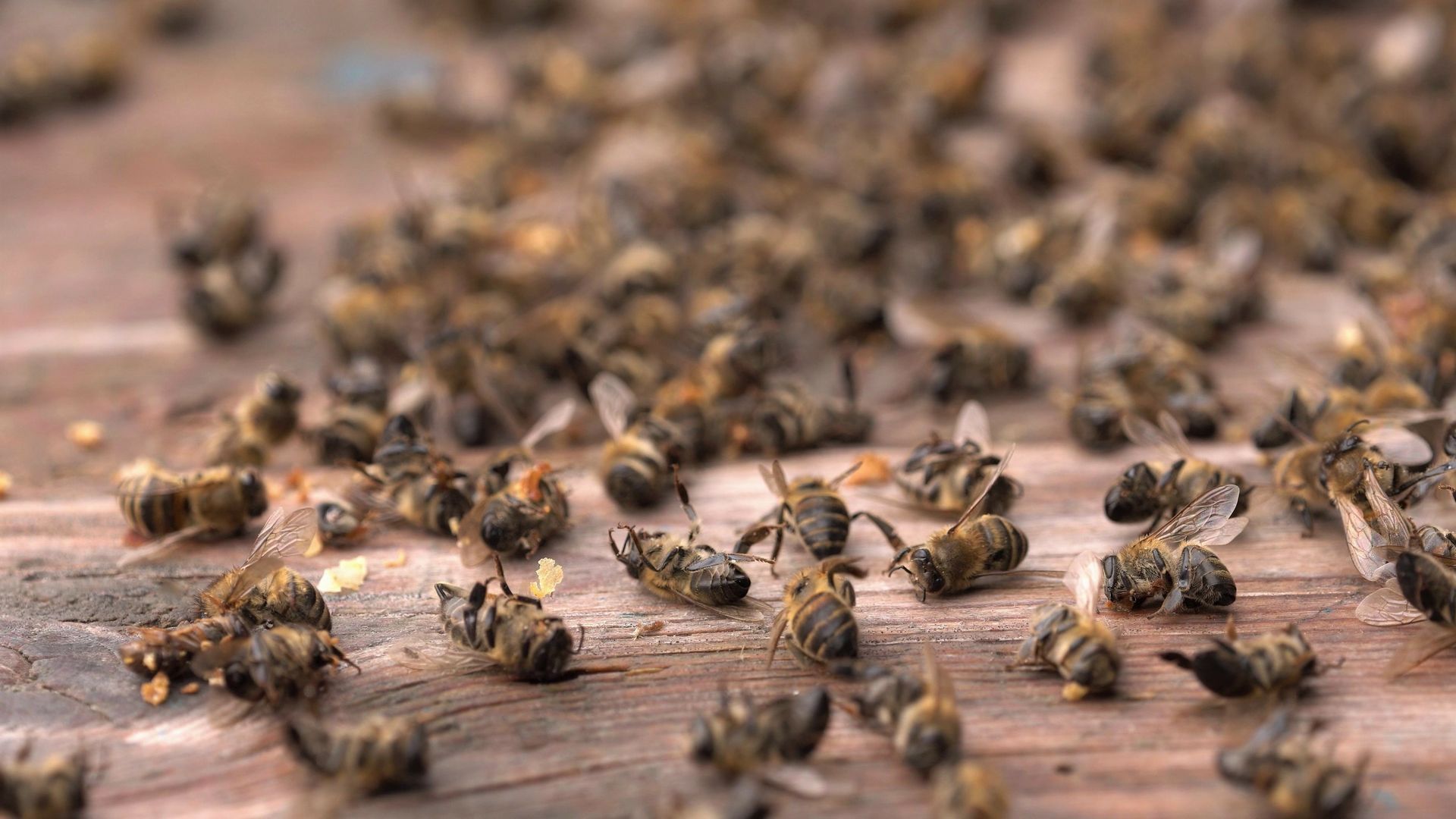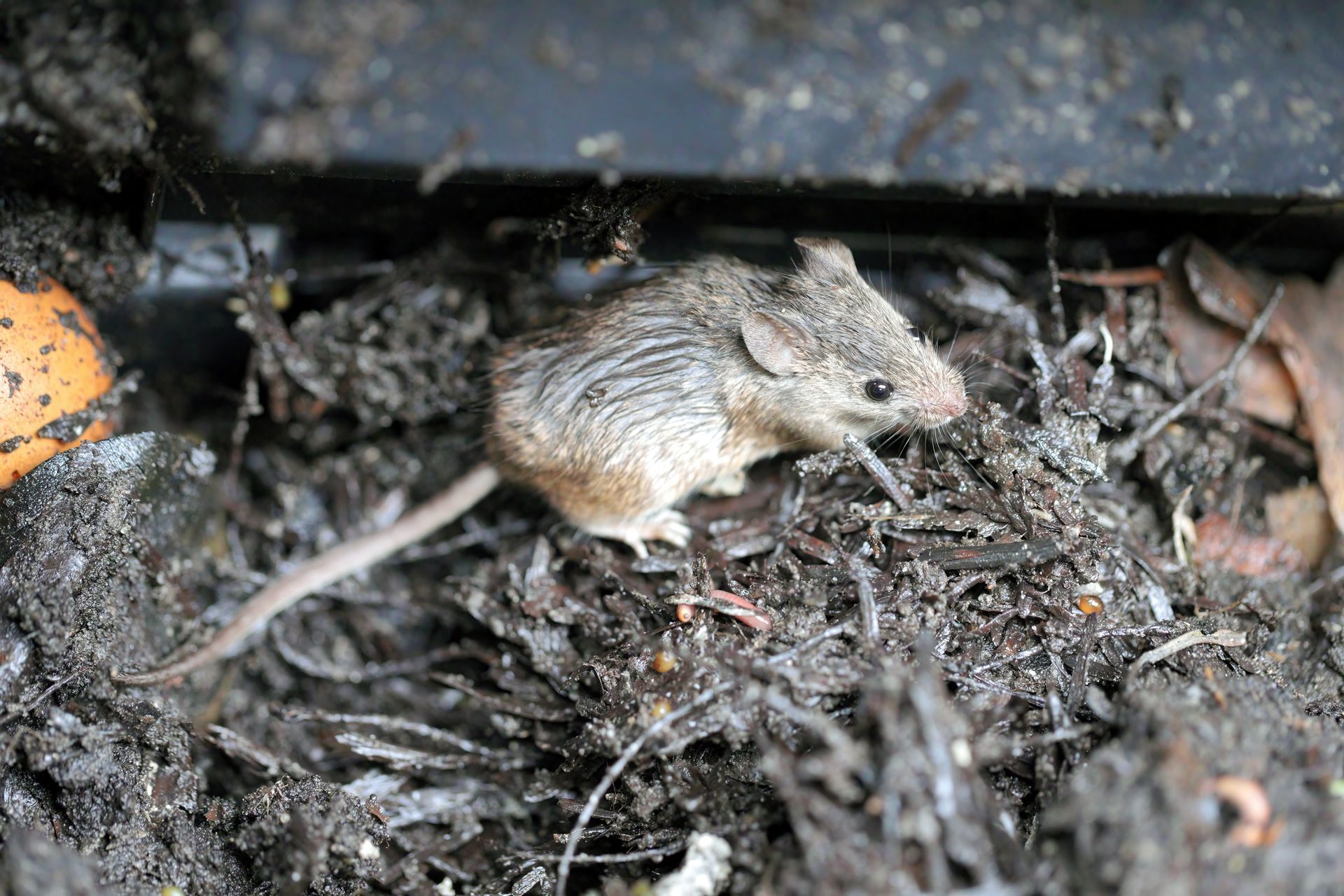How Long Do Bees Live?

A bee’s lifespan is largely influenced by their species and the specific role they play within their colony. There are approximately 20,000 distinct bee species around the world with around 4,000 native species found in the United States. Some species can live for over a year while others have a lifespan that spans a couple seasons before they die off in the winter. Worker bees typically have shorter lifespans with some species living for just a few weeks. Queens can live for several years with the queens of some species reaching six years old. There's a vast diversity in the lifespans of bees within a single hive and across several species.
Life Cycle of Bees
The life cycle of bees begins when the queen lays her eggs. The larvae will hatch from these eggs roughly 3 days after they are laid. After hatching, the larvae are fed a blend of pollen, nectar, and adult bee saliva by young worker bees in the colony. After about 12 days of feeding, the larvae encase themselves in cocoons to start the pupal stage. After seven to ten days, a fully developed and mature bee emerges from its cocoon. Immediately after they emerge, their wings and exoskeleton start to harden so they can take their place within the colony. Bees that develop into workers will take their role as providers for other larvae and the queen in the first stage of their developed lives before becoming foragers of pollen and nectar as they get older.
Lifespans of Different Bee Species
There are several factors that can impact the lifespan of bees. Factors like weather, food availability, human activities, diseases, and parasites can impact a bee’s lifespan. Species also play a large role in determining bees’ lifespans. Honeybees are social and a part of a much larger colony and worker honeybees are important to colony survival. Honeybees can lay dormant while they overwinter which allows them to live longer lives compared to other bee species. Bumble bees have much shorter lifespans because only the queen survives the winter while all of the worker bumblebees die off. The queen lives on to establish a new colony in the spring.
How Long Do Honeybees Live?
Honeybees are social insects that thrive in massive colonies. Bee colonies are considered 'superorganisms' that can house between 50,000 to 60,000 bees. The role a bee plays within the colony combined with when it pupated dramatically influences its lifespan. Worker bees that develop into mature adults before autumn typically live between 2 to 6 weeks. Bees that develop in fall need to survive the winter so they can live up to 20 weeks. Queens have the longest lifespan with most queens living between 1 - 3 years. Under optimal conditions, there have been queens known to live as long as 6 years. Drones are males and serve only one purpose which is to mate with the queen. They typically live until they mate which typically is around 30 days on average.
Lifespan of Honeybee Queens
Queen bees usually live between 1 – 3 years and up to 6 years in optimal conditions if they can remain free of diseases and parasites. The queen is the sole reproductive honeybee in a colony and if the queen bee dies, the colony will collapse if a new queen isn’t raised. It’s important for a queen bee to maintain their level of egg production because as a queen bee ages, her ability to lay eggs slows down. When egg production slows down, the worker bees in the colony will identify a larva that has the potential to become a new queen. When a new potential queen is found, the worker bees will feed the larvae with “royal jelly” which contains the nutrients necessary for her to develop into a healthy queen that can replace the aging queen.
Why Do Queen Bees Live the Longest?
The lifespan of a queen honeybee is directly impacted by the queen’s diet and activity. The queen receives better nutrition and experiences limited physical strain and exposure to the elements.
- Queen bees are fed a nutrient-rich substance produced by worker bees. This “royal jelly” contains a protein called Royalactin which stimulates the queen’s growth and egg producing abilities.
- Queen bees are also less active compared to other female bees. Other workers spend their entire days foraging for food while the queen remains inside the colony where she is protected from the elements and predators.
Lifespan of Worker Honeybees
Worker honeybees make up the largest portion of a bee colony’s population. They have lifespans that vary based on the season they develop into mature adults. Bees that hatch and develop during spring or summer typically live up to 5 to 6 weeks. Their lives are extremely busy feeding larvae, producing honeycomb, or foraging for nectar and pollen. Workers that develop in the fall experience a much longer lifespan because these bees overwinter until spring. During this time, they have a much lighter workload because the queen stops egg production which means that workers don't have brood to tend to or feed. Their only job at this time is to cluster around the queen to keep her warm throughout the winter. Once spring rolls around, these workers will resume their normal role and survive for another month or so before they die and make room for the first spring brood of workers.
Lifespan of Honeybee Drones
Drones are male honeybees, and their only job is to fertilize the eggs of future queens. It is important to note that their lives can be cut short if they successfully mate. Drones that complete mating lose their reproductive organs after fertilization which causes the drone to die shortly after. Otherwise, drones generally live between 30 to 55 days, but this short lifespan may be the result of getting kicked out of the hive because they don't contribute to the hive's productivity. This ejection ensures the hive conserves food and resources for the winter but also leaves the drones to face the elements which inevitably leads to their demise due to cold or starvation.
How Long Do Bumblebees Live?
A bumblebee colony generally starts in the spring when a queen with fertilized eggs emerges from overwintering. She will start to establish a nest as soon as she finds a safe place to lay her first brood of eggs. The queen cares for the first brood of eggs and larva until they mature into adult workers that can help develop the hive. These workers will generally live for up to 6 weeks, but all workers will perish at the start of the following cold season.
Lifespan of Bumblebee Queens
Fertilized bumblebee queens will emerge from a colony in late summer or early autumn before finding a place to hibernate over winter. While they are developing, their only goal is to build the fat reserves needed to get them through the winter. In spring, the fertilized queens re-emerge and are ready to establish and nurture new colonies of their own. Bumblebee queens live for a year including the hibernation period. Normally bumble bee queens will die off after a year but if conditions are favorable, some bumblebee queens can live for several years.
Lifespan of Bumblebee Workers
Bumblebee workers have lifespans that depend on their species, duties, and environmental factors. These workers typically live anywhere from two weeks to six weeks. A worker’s tasks significantly impact their lifespan. Workers that are primarily engaged in nest duties will live longer compared to bees who have to forage. Foraging bumblebees face challenges like predators, weather conditions, and the physical demands of gathering resources.
Lifespan of Male Bumblebees
Male bumblebees typically live around two weeks. Their purpose is to mate so they typically leave the nest when future queens emerge to fulfill their role and fertilize the eggs of future bumble bee generations. When they are done, they never return to their original nest. Unlike the queens, male bumblebees do not hibernate during the winter. They will survive for a short period or until the colder temperatures that are too cold to survive cause them to die off.
How Long Do Carpenter Bees Live?
Carpenter bees are solitary bees that live for roughly one year. They do not breed large colonies and typically reside in small numbers within individual nests. Each nest generally houses just a single reproductive female and her young. There can be several separate colonies close by that exist peacefully.
Lifespan of Female Carpenter Bees
Carpenter bees do not have a typical “queen” to rule over an entire colony like other social bee species. Instead, a female carpenter bee will be the matriarch of an extremely small number of her offspring. Female carpenter bee will lay her eggs in the spring and forage through most of the summer season. Due to the exposure and wear and tear, female carpenter bees typically live for about a year. It is rare that a female carpenter bee will survives through two consecutive seasons.
Lifespan of Carpenter Bee Drones
Unlike their honeybee counterparts, male carpenter bees don't die immediately after mating. They can engage in multiple mating sessions but still only live for about a year before dying off. During this time, they will forage for food and help protect the nest.
How Long Do Solitary Bees Live?
Solitary bees cover a vast array of species like mason bees, digger bees, and sweat bees. Unlike bees that live in colonies, female solitary bees operate independently. They focus on nest-building and rearing their young while males still fill the role of mating. The lifespan of solitary bees is generally much shorter than social bees and can span between a few weeks to a few months long.
What Can Impact a Bees’ Lifespan?
Bees’ lifespans are influenced by various internal and external factors. Here are some key factors that can impact a bee's lifespan:
- Diet and Activity: The quality and abundance of pollen consumed in comparison to the bee's level of activity play a large role in a bee’s longevity. Bees that are active must consume enough to sustain themselves. Queen bees do not have to work hard and are fed the most nutritious diet which increases their lifespan drastically when compared to worker bees.
- Pesticides: Exposure to certain pesticides can kill a bee instantly or lead to the gradual failure of bodily function. In large scale exposure incidents, colony collapse may be triggered after the hive has been infected by the pesticides.
- Climate Change: Unusual weather conditions like extreme cold or heat and unpredictable storm patterns can change a colony’s reproductive cycle and resource availability.
- Diseases, Pests, and Predators: Bees face threats from various diseases and pests like the varroa mite. Additionally, predators like yellow jacket wasps and certain birds prey on bees.
- Habitat Loss: Urbanization and other human activities have led to a decline in clean water sources and diverse food which are essential for ideal bee habitats.
Contact EcoGuard if You Are Dealing with Bees
If you're dealing with a bee problem, contact the experts at EcoGuard Pest Management. Bees play an important role in our ecosystem so it’s essential to address their presence with care. Whether you're looking to safely relocate a hive or need advice on managing bees around your property, EcoGuard's knowledgeable team is equipped to help you. Don’t put yourself at risk. Prioritize both your safety and the well-being of these vital pollinators by contacting EcoGuard Pest Management today. Our team can be there to inspect your property right away. Call today to schedule an appointment!

















